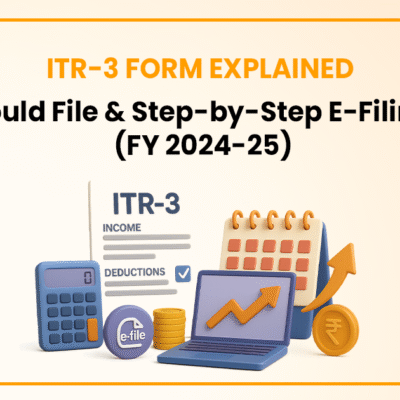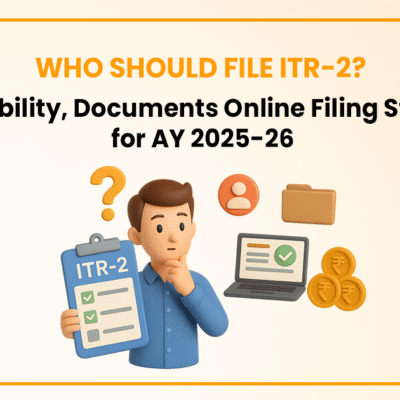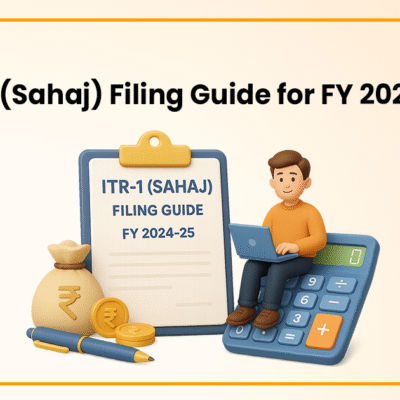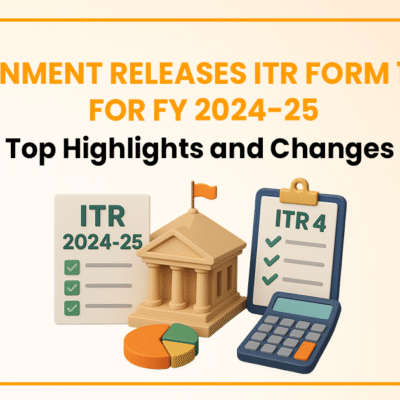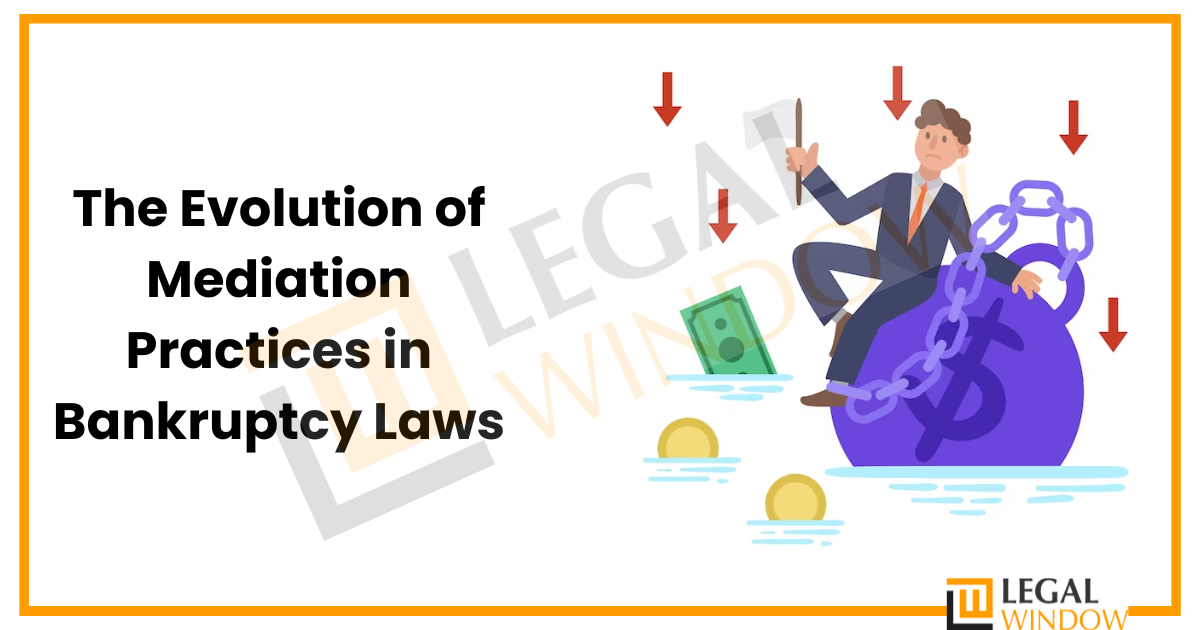
The areas of mediation, insolvency, and bankruptcy frequently intersect within the worlds of business and finance, encompassing diverse legal procedures. The purpose of insolvency and bankruptcy frameworks is to effectively address financial difficulties and fulfil debt commitments, whereas mediation serves as a voluntary approach to resolving conflicts. This article explores the interrelationships between bankruptcy, insolvency, and Mediation Practices in Bankruptcy Laws, elucidating their possible cooperation or divergence in different contexts.
Insolvency and bankruptcy systems deal with managing financial distress and debt resolution within the complex world of financial affairs. Insolvency refers to a condition in which the whole obligations of an entity surpass its total assets, leading to the initiation of processes aimed at either restructuring or liquidating the entity. Bankruptcy is a legally mandated procedure that occurs when an individual or entity becomes insolvent. It entails the involvement of the court system in order to address outstanding obligations, with the potential outcomes of debt discharge or reorganization.
In contrast, Mediation Practices in Bankruptcy Laws presents an alternate approach by encouraging conversations between parties in disagreement, with the aim of achieving mutually accepted solutions outside the context of formal judicial processes. Although insolvency and bankruptcy proceedings have distinct goals and frameworks, there are instances where these mechanisms overlap, and mediation can serve as a valuable tool in addressing issues that arise from such proceedings. Understanding their interrelationship is critical for navigating complex financial scenarios and identifying chances for cooperation or competition among these critical systems.
Mediation: Dispute resolution
The Mediation Act of 2023, which was passed by both houses of Parliament and received the approval of the President, seeks to enhance the process of conflict settlement by promoting mediation. The implementation of written mediation agreements is required, allowing for voluntary engagement in pre-litigation mediation. The Act specifically outlines some areas, such as criminal conflicts and tax-related concerns, as being excluded from the scope of mediation. Mediators, regardless of their country, are required to fulfil specified criteria. Mediation is to be conducted within the jurisdictional limits of the pertinent courts, with the possibility of expansion to other locations or online platforms with mutual agreement. The legislation establishes a prescribed period of 120 days for the mediation process, with the possibility of an additional 60-day extension. The conclusion of successful mediation results in the creation of a written settlement agreement that possesses enforceability similar to that of a court order and is subject to only a restricted range of grounds for potential challenge.
Minister Arjun Ram Meghwal emphasized the government's dedication to promoting alternative conflict resolution, with a specific focus on mediation, to achieve expeditious administration of justice. Although the Act represents a significant advancement in the field of conflict resolution techniques, it has been subject to criticism due to its perceived deficiency in providing clear instructions for interim reliefs in the context of mediation.
Further, The Companies (Mediation and Conciliation) Rules, 2016 were enacted to carry out Section 442 of the Companies Act, 2013, which introduced Mediation Practices in Bankruptcy Laws and conciliation as dispute resolution processes in corporate affairs, reducing the pressure on quasi-judicial authorities such as tribunals. By selecting and removing qualified experts from the panel, the Rules enable a Regional Director nominated by the Central Government to independently form a Mediation and Conciliation panel. However, these regulations depart from the idea of an impartial adjudicator by strictly defining the professions that qualify for empanelment.
Why and How the Mediation Act was Introduced.
In order to promote party autonomy and confidentiality while offering a systematic framework for dispute resolution, the Mediation Act was introduced. Through written agreements, it gives parties the authority to choose mediators and set mediation procedures, giving them flexibility in settling conflicts. To ensure competency, only registered mediators may participate in pre-litigation mediation. Also, maintaining confidentiality is a fundamental principle that protects all mediation information from being disclosed in court, with the exception of certain public safety or criminal instances. Although territorial jurisdiction is ideal, the Act recognizes enforcement within the court's jurisdiction and permits online or alternative locations for convenience. While successful mediations provide comprehensive settlement agreements that go beyond the original focus of the case, unsuccessful ones exclude time from the statute of limitations for further procedures. The Act promotes fairness and accountability in the mediation process by making it easier to dispute agreements within a certain period of time and on certain grounds.
Insolvency: Understanding Financial Distress and Solutions
A business or individual is deemed insolvent when they are unable to pay their debts. This often occurs in bankruptcy procedures, during which the bankrupt party may be subject to lawsuits and asset sales to satisfy debts. Business owners can handle this by engaging with creditors directly and offering reasonable repayment options to stop additional harm from occurring. Even if they are delayed, creditors usually embrace such arrangements because they prioritize payback and loss mitigation. Entrepreneurs who want to restructure their debt draft a strategic plan that includes ways to minimize costs without sacrificing functionality. In order to reassure creditors about the company's capacity to provide sufficient cash flow for profitability and debt settlement, this proposal describes possible savings and support options. The strategy tries to show how the business will overcome financial obstacles in order to fulfil commitments and continue operations.
Bankruptcy: Exploring Financial Insolvency and Rehabilitation
Bankruptcy provides a means for individuals or companies burdened by excessive debts to obtain a new beginning. The process is often initiated through the submission of a petition, which is commonly filed by the debtor and infrequently by creditors. A comprehensive assessment of the debtor's assets is conducted, which has the ability to facilitate the repayment of either a portion or all of the debts. The legal procedure evaluates the state of financial insolvency, allowing people or entities experiencing financial difficulties to undertake a reorganization or dissolution of their financial obligations. This presents an opportunity for a process of recalibration, facilitating the resolution of outstanding financial obligations and offering a fresh start to individuals experiencing economic hardship.
Interplay Between Mediation, Insolvency and Bankruptcy
The Insolvency and Bankruptcy Code, 2016 (IBC), which uses mediation as a crucial pre-bankruptcy instrument, has completely changed the bankruptcy law in India. Conflicts between debtors and creditors are settled through mediation, an Alternative Dispute Resolution (ADR) process, before they become litigious. Effective and quick resolution during bankruptcy is prioritized by a neutral mediator who fosters communication and helps parties work together to reach a mutually beneficial settlement.
There are several benefits to mediation in insolvency proceedings. It maintains open communication and collaboration between debtors and creditors, which is essential for long-term commercial ties. It also reduces litigation costs, making it a more affordable option. Disputes concerning claims, asset assessment, and proceeds distribution between operational and financial creditors are resolved through mediation. The IBC acknowledges the importance of mediation and permits its appointment, highlighting its function in insolvency.
The importance of mediation throughout the insolvency process is emphasized by Section 74 of the IBC, which permits the Arbitrating Authority to designate a mediator. Continuous resolution efforts can be ensured by starting mediation at any point before or after insolvency. In order to ensure a fair and effective bankruptcy framework, it plays a crucial role in insolvency by encouraging cooperative agreements between stakeholders, expediting proceedings, and reducing the negative effects of legal disputes.
Conclusion
The link between legal frameworks, financial instability, and mediation is demonstrated by the interplay between bankruptcy, insolvency, and mediation. Understanding the unique aspects and legal requirements of bankruptcy and insolvency processes is essential to utilizing mediation as a supplement, simplification, or preventative measure. As acknowledged by the IBC, mediation plays a crucial part in India's insolvency process. It provides the appointment of a mediator to aid in resolution, hence reducing expenses and time. The process of resolving disputes is prolonged if formal bankruptcy proceedings are pursued after mediation fails.
However, the confidentiality of mediation may conflict with bankruptcy's openness requirements. Despite this, it helps maintain relationships, particularly long-term business ties. Mediation Practices in Bankruptcy Laws is essential for efficient and quick dispute settlement during bankruptcy. This intricacy highlights how difficult it is to balance conflict resolution and financial hardship in the legal system. These strategies are effective for helping debtors, creditors, and stakeholders navigate financial obstacles. Thus, a thorough comprehension of their respective responsibilities and strategic planning for their harmonic application is necessary for successful integration.
LegalWindow.in is a professional technology driven platform of multidisciplined experts like CA/CS/Lawyers spanning with an aim to provide concrete solution to individuals, start-ups and other business organisation by maximising their growth at an affordable cost. Our team offers expertise solutions in various fields that include Corporate Laws, Direct Taxations, GST Matters, IP Registrations and other Legal Affairs.
Categories
- Agreement Drafting (23)
- Annual Compliance (13)
- Change in Business (37)
- Company Law (150)
- Compliance (90)
- Digital Banking (3)
- Drug License (4)
- FEMA (17)
- Finance Company (42)
- Foreign Taxation (9)
- FSSAI License/Registration (15)
- GST (124)
- Hallmark Registration (1)
- Income Tax (214)
- Latest News (36)
- Miscellaneous (170)
- NBFC Registration (8)
- NGO (18)
- SEBI Registration (6)
- Section 8 Company (10)
- Start and manage a business (27)
- Startup/ Registration (134)
- Trademark Registration/IPR (48)
Recent Posts
- Major Upgrade: Breaking Down GST 2.0 September 15, 2025
- New Income Tax Bill 2025 August 27, 2025
- ITR-3 Form Explained: Who Should File & Step-by-Step E-Filing Guide (FY 2024-25) June 25, 2025
All Website Tags
About us
LegalWindow.in is a professional technology driven platform of multidisciplined experts like CA/CS/Lawyers spanning with an aim to provide concrete solution to individuals, start-ups and other business organisation by maximising their growth at an affordable cost.



